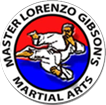the art of SPARRING
Sparring is a very important part of martial arts training and is therefore practiced at the end of every class. The specific martial art techniques are taught in a pre-arranged manner using patterns, count sparring and other structured exercises. When first introduced to the student, a new technique is theoretical and not yet tested or internalized.
Sparring allows the student to test new techniques in a spontaneous situation which helps the techniques become real and viable tools.
Free sparring is responding to the unknown. Through the daily practice of sparring one starts to get comfortable, to relax. Being able to relax when sparring is very important. The true skill of a martial artist comes into play when relaxed because when relaxed one begins to intuitively anticipate a sparring partner’s intentions.
Rules & etiquette of sparring
The class rule and the most important thing to remember is that - Safety is number one!
Begin by bowing to the master/instructor and to your sparring partner. Shejak means to begin but you bow first. It is customary to touch gloves before beginning. If your partner falls, offer to help them up, bow and resume sparring.
People from all walks of life participate in the practice of martial arts. Their reasons for studying the martial arts vary. Most people have to work for a living and can’t go to work injured in any way. All punches, kicks, and blocks are stopped just short of striking a fellow class mate. No contact is allowed.





